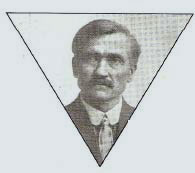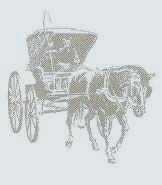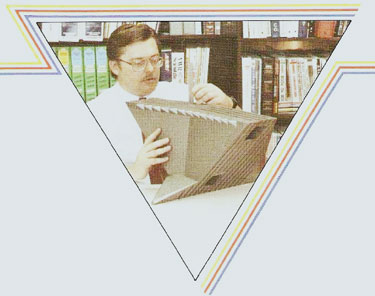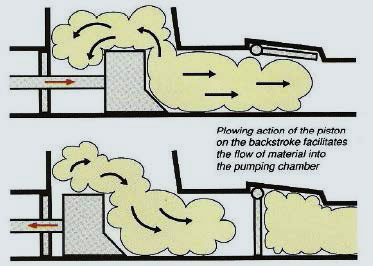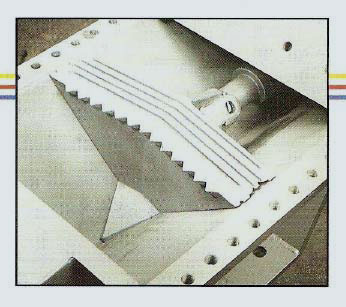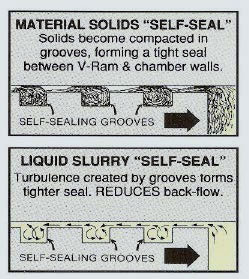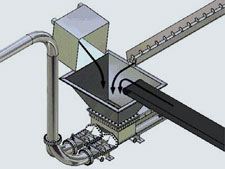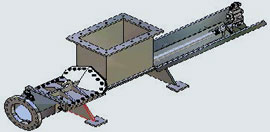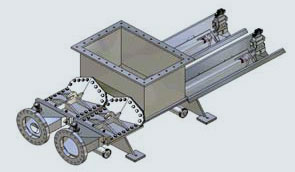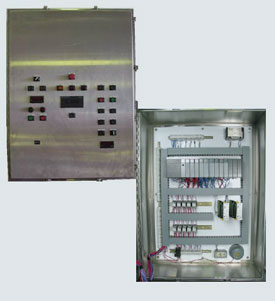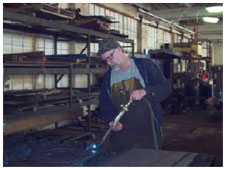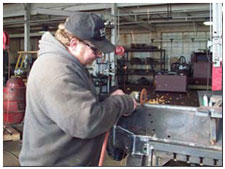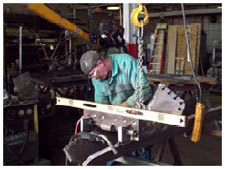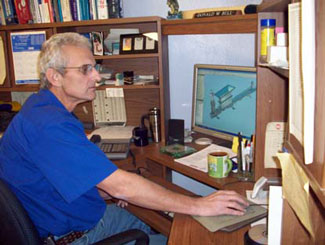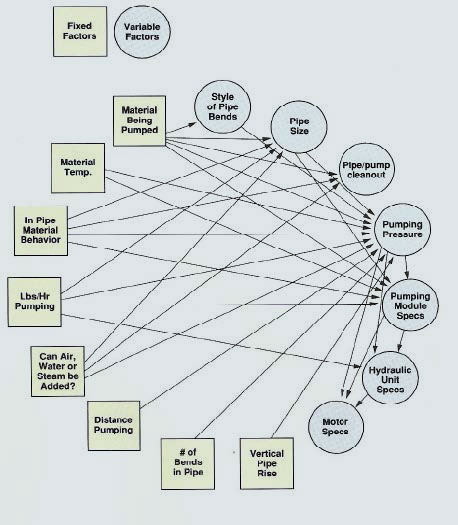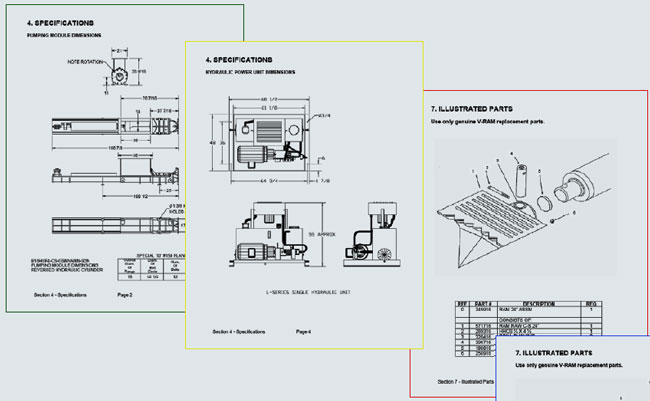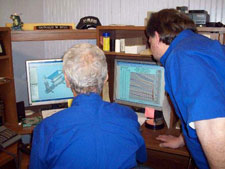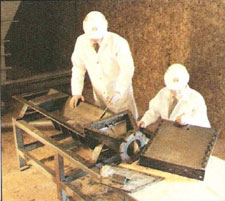About Us
With over 100 years manufacturing experience, we offer the widest and finest line of piston pumps in the world for pumping difficult materials from unbroken beef bones in food processing plants to high solid sludges in municipal wastewater processing plants. Our equipment is engineered, designed and manufactured in Albert Lea, Minnesota USA and is shipped worldwide.
If it can be pumped, we can pump it! We offer product testing for materials that we are not familiar with to ensure that our pumps are the best solution for your application.
We will not sell a pump just to sell a pump. We are committed to customer satisfaction.
Our Spirit of Innovation goes back to 1895
It was 1895. Grover Cleveland was President, Victoria was Queen of England and Henry Ford would build his first automobile the following year.
In Minnesota, Gustave Olson, a son of Norwegian immigrants had begun manufacturing his new invention. This patented device greatly simplified the moving of hay into barns and was the first of several innovations which led to the early establishment of our company as a successful agricultural equipment manufacturer.
Although a mature company, we have long recognized that our continued success is dependent on providing for the needs of a constantly changing economy. Through the years, our research and development focus has been increasingly toward agri-business and industrial material handling. It was through those efforts that we produced what we consider our most significant achievement to date – the V-RAM Pump.
How the search for simplicity led to a new breakthrough in pump technology.
In the early 1970″s Dave Olson was searching for a better, more efficient and economical way to move difficult-to-handle solid materials.
Mechanical conveying systems and augers were inefficient, inflexible, hazardous and required high horsepower and frequent maintenance. Air pressure systems were expensive, fragile, complex, costly to operate and had to meet rigid safety regulations. They were also limited to well-mixed slurries that required low pumping pressure.
Pumping addressed some of the deficiencies of conveyors, augers and air pressure systems. However, ordinary pumps have difficulty accepting large solids and are more likely to plug up and cavitate. Their complex construction often results in high maintenance costs and their close tolerances make them susceptible to the abrasive action of material being pumped.
The ideal, Olson believed, was a pump which could readily accept a variety of large, solid, unprocessed material and efficiently apply the pressure required to move it through a pipe. It would also have to survive the harsh interaction of abrasive material with the chamber wall, and the piston, or impeller.
After extensive research and trial-and-error prototypes, Olson discovered that a V-shaped piston moving within a triangular pumping chamber achieved an unusually high volume of material per piston stroke. The wide mouth created a very high ratio of intake opening size to chamber volume, which provided a fast, unrestricted flow of large, solid materials from the hopper to the chamber.
The wide “bite” of the V-shaped piston proved to be extremely effective in capturing the loose material in the charging chamber and moving it to a pressurized condition and into the pipe. Furthermore, the backstroke plowing action of the piston agitated the remaining material and facilitated the feed into the charging chamber for the next stroke. It was also apparent that designing the shape of the hopper for a specific material was critical in order to achieve flow into the chamber.
The wide “bite” of the Vshaped piston proved to be
extremely effective in capturing the loose material
in the charging chamber and moving it to a pressurized
condition and into the pipe. Furthermore, the backstroke
plowing action of the piston agitated the remaining
material and facilitated the feed into the charging
chamber for the next stroke. It was also apparent that
designing the shape of the hopper for a specific
material was critical in order to achieve
flow into the chamber.
V-Ram Pumps
The patented V-Ram piston design also eliminates much of the high-wear, high maintenance deficiencies of ordinary pumps. The triangular pumping chamber provides a significantly higher wear surface and distributes wear over a greater area than round-piston pumps, which tend to concentrate wear gravitationally in the lower portion of the cylinder wall.
The piston is ringed with a series of grooves which maintain chamber pressure by trapping material and creating its own seal. This “self-sealing” capability proved to be surprisingly effective when pumping both solids and liquid slurry. It also eliminates the need for replaceable piston rings, seals and the extremely close tolerances required for the efficient operation of ordinary pumps.
This “wide tolerance” characteristic, together with a ram machined from a specially hardened chrome alloy casting, means that the V-Ram Solids Pump has a high tolerance for abrasive materials. It is comparatively unaffected by wear factors that would shorten the life of ordinary pumps. V-Ram’s simplified design makes it very tolerant of tramp material which can destroy ordinary pumps.
V-Ram Solids Pumps may also be equipped with an automatic response to any tramp material blockage. When a high pressure condition indicates tramp material is restricting pumping, an alarm alerts the operator. Pump cycling will continue automatically to attempt clearance of the obstruction. If the material cannot be cleared automatically, the alarm will continue and the operator will clear the pump manually.
Clean out openings at the bottom of the charging chamber and the removable top plate on the pump chamber provide access for removal of tramp material, if necessary.
A unique, practical design with unmatched versatility.
The V-RAM Pump was first used industrially in 1977 to pump renderings in poultry processing plants. Since then, the V-RAM’s unique dynamics have been applied to an ever-growing list of material handling problems.
V-RAM Pumps are moving processed or unprocessed materials, solids or liquids, at high volumes over long distances. They are being used to control flow into multi-pump processing and material handling systems.
A diversity of materials, including some previously considered impossible to pump without pre-processing, have been handled efficiently by V-RAM Pumps. For example: they have proven to be singularly effective in pumping substances of extremely high viscosity – up to 40 million centipoise at 20,000 lbs/hr.
History-of-V-RAM-Design2The V-RAM design eliminates pre-processing in many applications, due to its ability to break up material in the pumping chamber. Air or liquid injection may be used to enhance movement in the pipe, or for further processing of material.
V-RAM Pumps may also be used to mix materials, use material as a moving force in an integrated system, further process materials during pumping, or to separate liquids from semi-solids to facilitate further processing.
History-of-V-RAM-design3Since even the best designed and built systems require adequate control in order to be fully functional, we have placed great emphasis on control research and development. We offer several standard control systems to completely automate the pumping operation. They can serve as the flow control point in the process.
Control circuit options include trouble-indicating, high pressure handling, material allocation, and secondary control to interface with other control systems.
The versatility of the V-RAM Pump makes it attractive to a variety of applications, such as pumping biomasses, sludges and process HistoryofV-RAMDesign4residues. Some of the materials which V-RAM can be especially effective in moving are municipal wastewater treatment sludge, water pre-treatment residues, solid waste, hazardous materials, coal slurry sludges from oil refineries, pulp and paper processing slurries, rendering and chemicals. V-RAM Pumps are also USDA approved for use in poultry, pork, beef, fish and other food and fiber processing.
Moving material under pressure through a pipe has several distinct advantages over more complex mechanical transport systems. The multitude of bearings, gears, and other moving parts required in the operation of belts, conveyors and augers are eliminated. Pumping is inherently a more simplified process than other mechanical systems. This, together with the simplified, dependable design of the V-RAM Pump, allows effective preventive maintenance that keeps cost to a minimum.
Because a pipe is a totally enclosed system, it reduces hazards, contains odors, helps meet air pollution standards and allows you to move unsanitary materials through sanitary areas.
A pipe can go where conveyors and augers cannot, thereby gaining valuable plant space. Piping allows complete layout freedom and may eliminate the need for expensive remodeling.
A system engineered to your requirements.
Each installation receives individual engineering attention. As the diagram at left indicates, there are at least 15 factors that influence the design process. The texture, temperature and density of material, distance, lift, pumping speed, sanitary requirements and the desirability of incorporating material mixing and/or processing into the pumping system all need to be considered. V-RAM’s physical characteristics permit great flexibility in designing an efficient material mover that meets your specific requirements.
With the degree of control you need….
Whether you need a simple air-operated “hands-on” control, or a more sophisticated relay circuit type, we will design a system that does the job for you. The pumping operation may be continuously monitored by sensors in the system which immediately alerts the control panel when there is any pump stoppage or hydraulic system malfunction.
Pressure drop in the pipe can be automatically controlled and managed for maximum pumping efficiency. Pump speed can be reduced manually or automatically to meet varying demands. All the units in a multi-pump system can be integrated into one control center.
All spelled out in detailed specification.
We will provide you with a specification book that defines the process and describes the engineering, equipment, installation, start-up, operation, service and maintenance support provided by V-RAM Pumps, as it applies to your specific application. It will include illustrations and data to assist you in your process.
We also manufacture pre-engineered V-RAM pumps. If the standard specifications of one of these pumps will fit your operation, it will be somewhat more economical than a custom-engineered unit.
No V-RAM leaves our plant until we are assured it will perform to your specifications. Your V-RAM is factory tested for its ability to pump and process your material where you want it and how you want it.
Support Service that Never Stops!
We establish a file on each unit we build so that we have intimate knowledge of its design and capabilities. Our engineers and service people will have ready answers for any questions you may have throughout the life of your V-RAM. We are committed to providing you with a pump that works upon installation and continues to work to your satisfaction.


